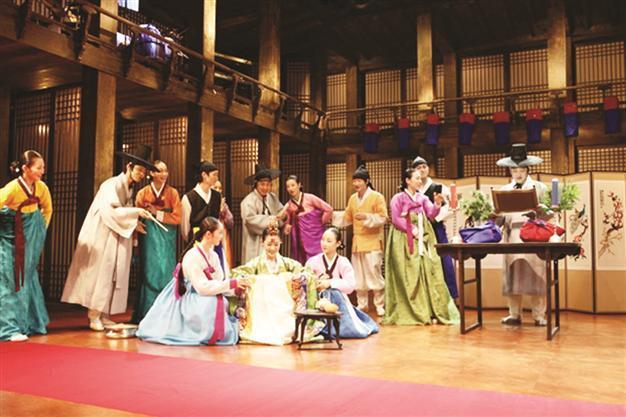‘Miso’ gives audience a non-tragic Romeo, Juliet
SEOUL

Korean musical ‘Miso’ has been adapted into a traditional dance drama love story chronicling the four seasons of Korea. It is a non-tragic version of a tragedy.
On a recent visit to Seoul, our hosts took us to a Korean musical called “Miso.” Having learned a few things about it, I understood it was a local version of William Shakespeare’s “Romeo and Juliet” and yawned to myself, saying, “Oh God, it’s another Romeo and Juliet. Just let me pass the time.”But it didn’t take long for me to understand how prejudiced I had been. As the drums began to appear, it was as beautiful as the repetitive combustion of punk music, although it was much different in origins. And the atmosphere was so incredibly light that I had to ask my friend Grace Sungshin, “wait a minute, is this not supposed to be a tragedy?” She said smilingly, “Shut up and watch.”
The play ended abruptly, in a beautiful way. It was a non-tragic version of a tragedy.
A beautiful smile
In “Miso,” meaning “a beautiful smile,” the audience could enjoy a selection of some of Korea’s most famous traditional performing arts, such as pansori, or a traditional percussion quartet, a fan dance, and a dance that was once performed in a shamanistic exorcism ritual.
During the show, audience members were also welcomed on stage to assist performers in Beona, an act where round plates are spun on top of long sticks or pipes.
I was also stunned to see that it was played by three different sets of three main actors. At first I thought the play was divided into three time sections and that each, representing a different age of the main characters, would play. I was wrong again. The whole play is the tale of Byeon Hakdo’s intense jealousy of Chunhyang and the enduring love between Chunhyang and Monryong (based on the Korean folktale Chunhyangjeon). There were three separate couples, and the story could be told in all the combinations of these different people.
The play has been adapted into a traditional dance drama/love story chronicling the four seasons of Korea. “Miso” has been a contributing factor in the spread of the “Korean Fever” as worldwide audiences gain a deeper appreciation of the traditional art, beauty and elegance of the country.
My humble advice to foreigners going to South Korea is that they check by telephone the Chongdong Theater in central Seoul and that they go to “Miso” one night. This is one way to discover the extremely artful way of life of the Koreans.
















